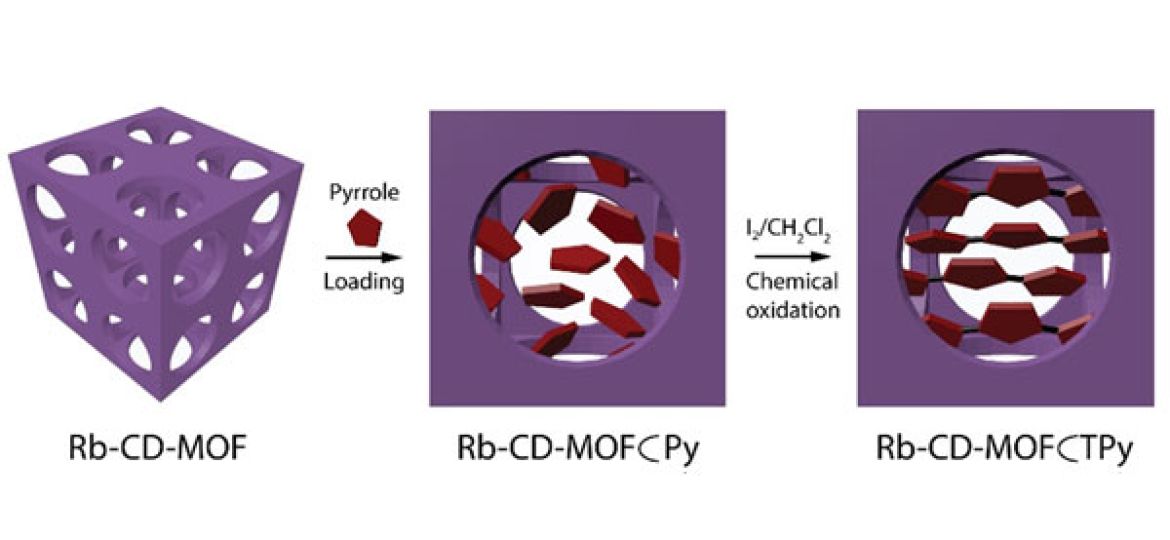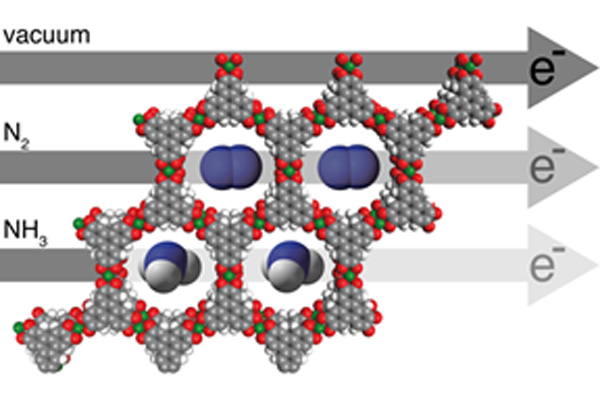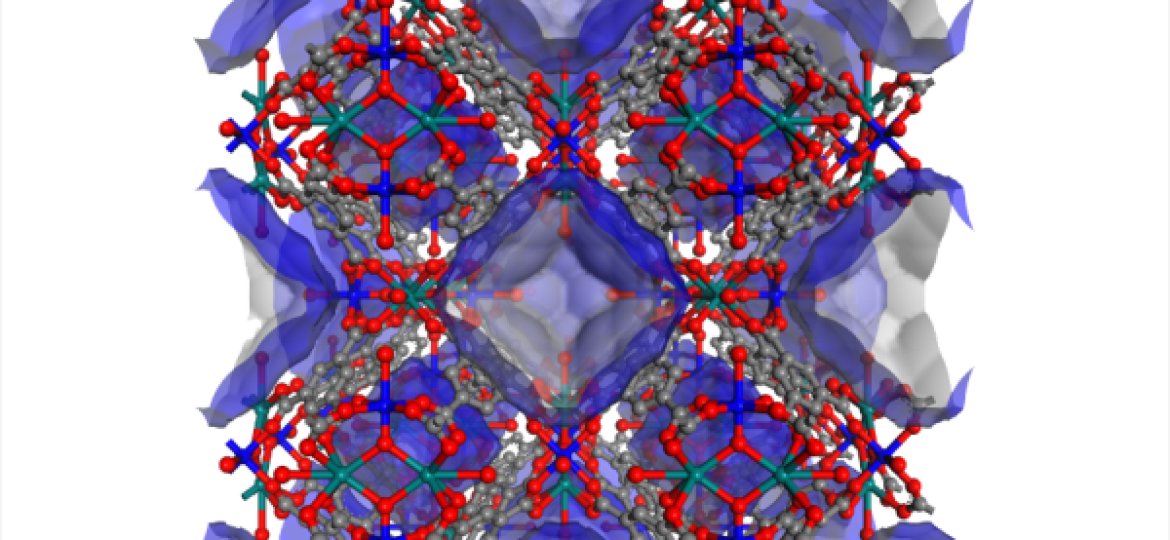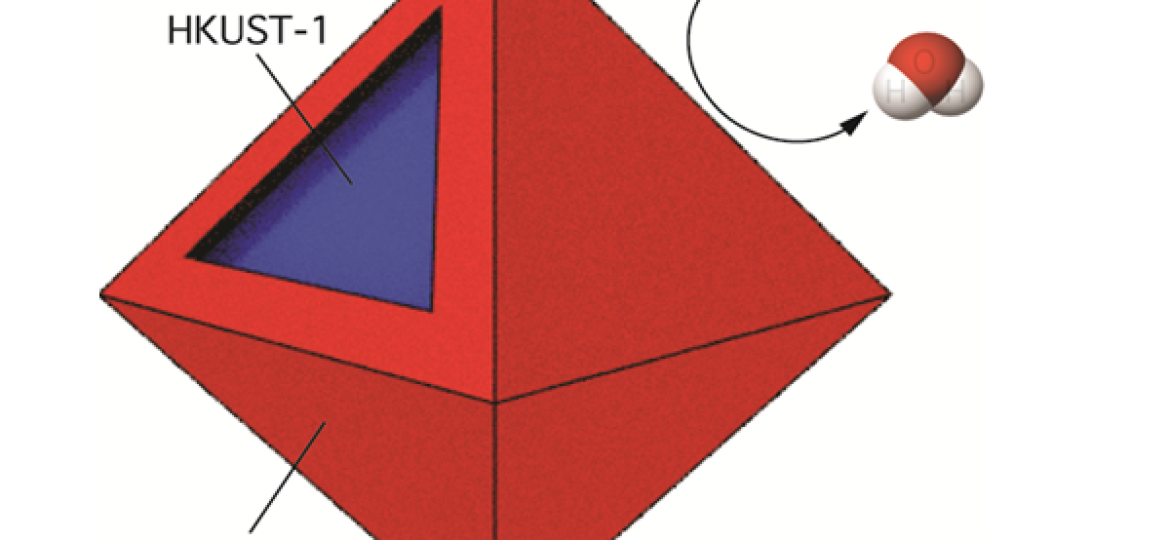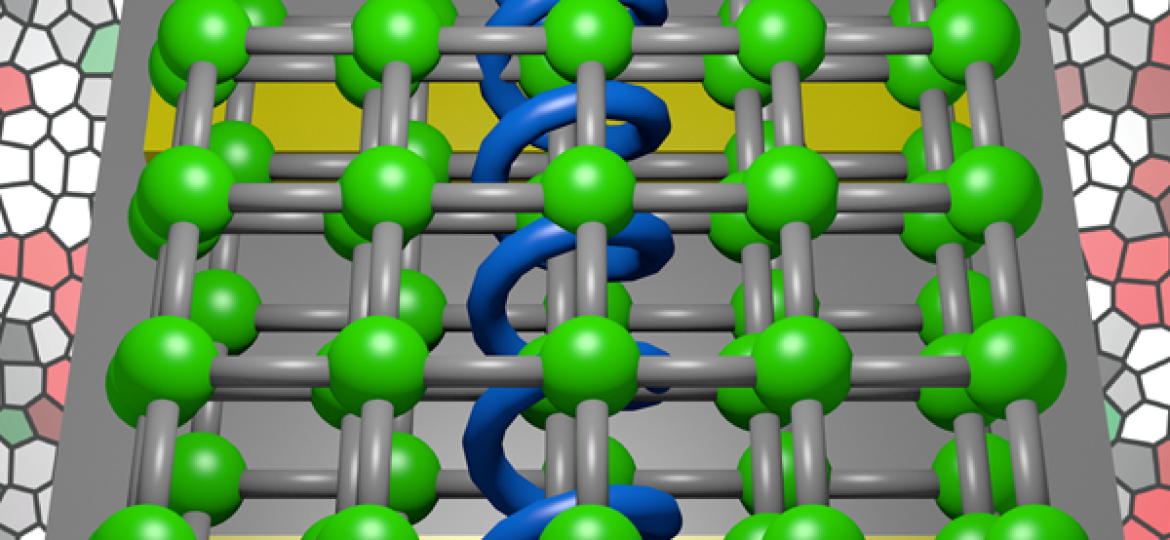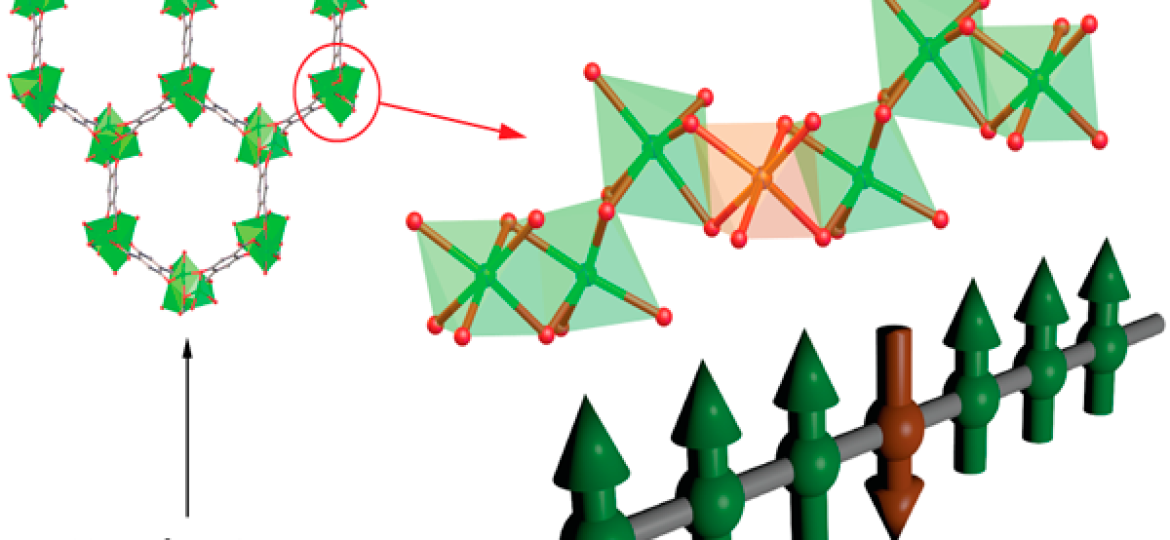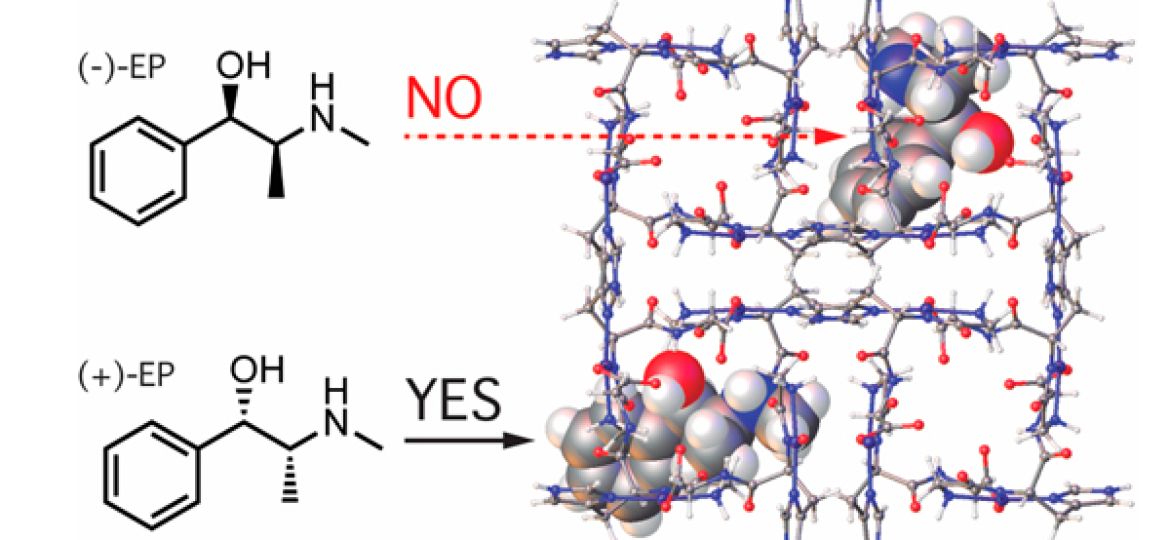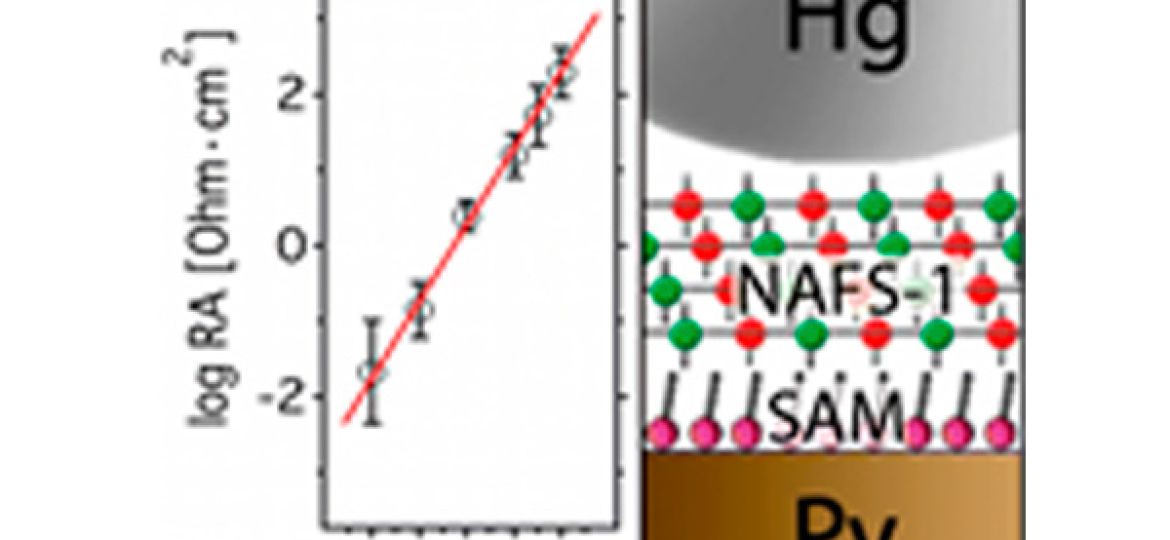Alejandros work has just been published in Angewandte Chemie Int. Ed. In this paper, Single-Crystal X-Ray Diffraction is used to follow the restricted polymerization of pyrrole inside a cyclodextrin MOF, which generates discrete units of highly reactive cationic terpyrrole inside the pores. This work gives unprecedented information about the host-guest interactions that limit the formation of polymers, that can be useful to future works using MOFs as templates for polymerization processes. For more info see here
Víctor, Neyvis and Garins work has just been published in Angewandte Chemie Int. Ed. This joint effort shines some light into the underlying mechanism behind the chemiresistive phenomena displayed by electrically conductive MOFs. Taking advantage of our previously reported devices based on Cu-CAT-1 ultrathin films (~30 nm), we used experimental data in combination with computational modelling to obtain evidence for a guest dependent modification of the MOFs electronic structure. This causes a direct dependence between the electrical response of the MOF and guest interactions with its open metal nodes. You can see the full text here
25 Jun: BAND-GAP ENGINEERING IN A NEW FAMILY OF HETEROMETALLIC TITANIUM(IV) METAL-ORGANIC FRAMEWORKS
Javier Castells & Natalia M. Padials work has just been published as a Very Important Paper in Angewandte Chemie Int. Ed. The work describes a new family of heterometallic Titanium(IV)-based Metal Organic Frameworks, namely MUV-10, that can be produced in gram quantity and show remarkable stability in water. Moreover, the paper shows how the electronic structure of these materials can be tuned through the heterometallic centres by means of metal doping, which is further supported by theoretical calculations and by photocatalytic H2 production from water, in collaboration with Hermenegildo Garcías group at ITQ. For more info see here
Javier Castells paper in ACS Applied Materials & Interfaces demonstrates the formation of robust catechol coatings for enhanced moisture tolerance by one step reaction of HKUST crystals with synthetic catechols. In collaboration with D. Ruiz-Molinas grout @ICN2 we show that the use of fluorinated catechols results in hydrophobic, permeable coatings that protect HKUST from water degradation whilst retaining close to 100 % of its original sorption capacity. For more info see here
Víctor Rubios work has just been accepted in Advanced Materials. This paper reports on the convenience of a solution-based bottom-up method, which combines the use of the Langmuir-Blodgett technique, Layer-by-Layer and self-assembled monolayers to transfer high-quality ultrathin films of a semiconductive 2D MOF in a controlled fashion. This versatile methodology enabled us to fabricate MOF-based electronic devices and study the electrical conductivity on the thinnest MOF films (10 nm thick) reported so far. For more info see here
Víctor Rubios Chem. Mater. paper reports on the controllable doping of Ni-MOF-74 with Fe to produce a MOF material which combines porosity and ferrimagnetic ordering. This validates metal doping as a useful strategy to modify the magnetism of other archetypical families of MOFs. For more info see here
José Navarros work has just been published in JACS. In collaboration with the MINOLTA team at UVEG we report the first example of a MOF capable of separating chiral polar drugs. Cu- GlyHisGly is capable of separating more than 50% of the (+)-ephedrine enantiomer from a racemic mixture in only.
Victor Rubios JACS paper reports on the use of self-assembled monolayers (SAMs) to enable the fabrication of highly oriented, ultrathin MOF films across millimetre-scale areas. Electrical conductivity was studied with Hg-drop electrometry. This strategy might be useful for the integration of MOFs as active interfaces in electronic devices.
In collaboration with E. Pardos group at ICMol, this work highlights the potential of flexible MOFs incorporating amino acids to enable efficient removal of mercury from solution. This porous solid displays an adaptable response reminiscent of that responsible for the biological activity of the enzyme mercuric reductase.

